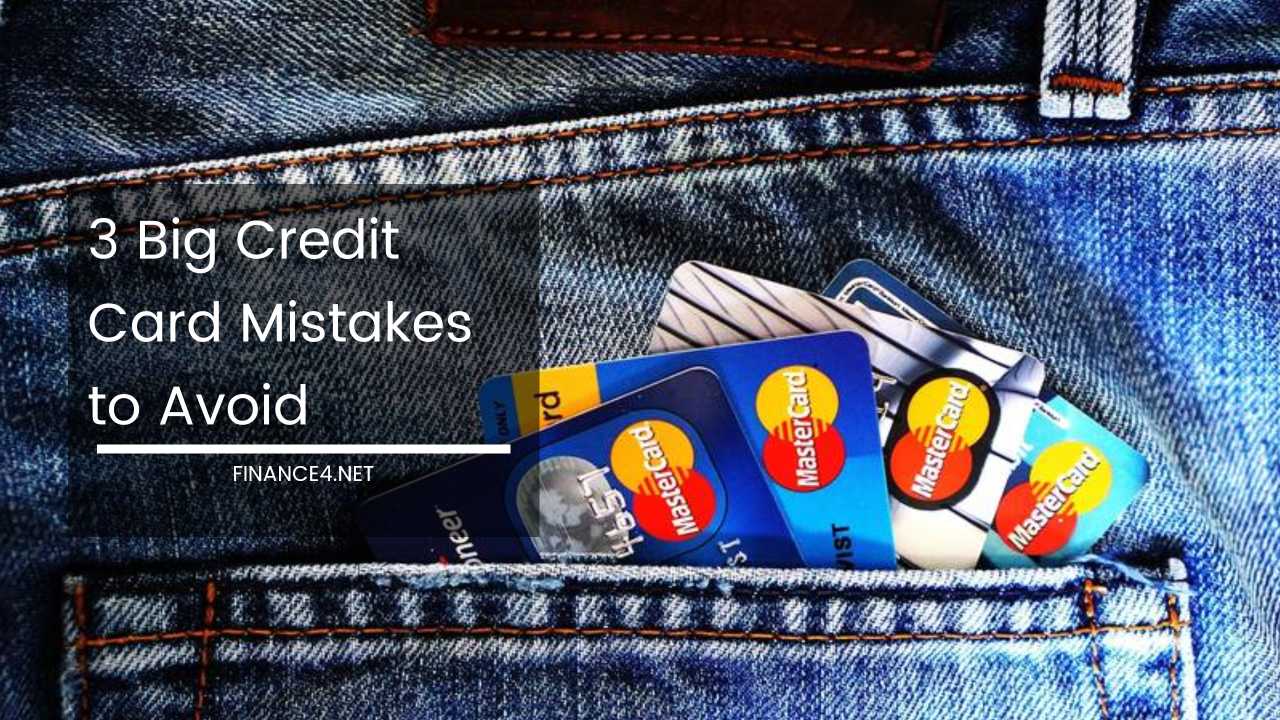3 Credit Card Mistakes to Avoid Building Debt

Mastering Your Plastic: Conquering Credit Cards and Building Financial Strength
Credit cards are double-edged swords. On one hand, they offer a plethora of advantages: building credit history, earning rewards on purchases, managing cash flow, and even financing emergencies.
On the other hand, irresponsible use can lead to a suffocating cycle of debt and financial strain.
This guide delves into three common credit card mistakes and equips you with the knowledge and strategies to transform your plastic into a powerful financial tool.
The Pitfalls: Avoiding Common Credit Card Mistakes
1. The Cash Back Conundrum
Cash back credit cards entice consumers with the promise of earning a percentage of their spending back in cash. Introductory offers like 5% cash back in the first few months can be tempting, especially if you use your card for most purchases.
However, these cards often come with a hidden monster lurking in the shadows – high Annual Percentage Rates (APR).
Here’s the trap: if you can’t pay your balance in full each month, the interest charges will devour the cash back rewards like a hungry Pac-Man. Let’s illustrate this with an example.
Imagine you have a card with a 20% APR and a £1,000 balance. Earning 5% cash back on your £1,000 spending translates to a £50 reward.
Sounds great, right? But if you only make the minimum payment, the interest accrued in a single month could easily exceed £50, wiping out your cash back gains and pushing you further into debt.
Conquering the Cash Back Conundrum:
- Track Your Spending: Monitor your spending meticulously. Many banks offer budgeting tools that categorize your expenses, helping you identify areas where you can cut back.
- Embrace the Full Payment: Develop the habit of paying your balance in full each month. This ensures you reap the cash back benefits without falling prey to interest charges.
- Consider Alternatives: If consistently paying your balance in full seems challenging, explore cards with lower interest rates or no annual fees. Remember, a card with a lower cash back percentage but a lower APR might be a better fit for your financial situation.
2. The Minimum Payment Maze
While making the minimum payment keeps you from defaulting, it’s a slow and expensive path to debt freedom. The minimum payment, typically around 3% of your outstanding balance, might create the illusion of progress. However, the reality is much harsher.
Let’s revisit the £1,000 debt example with a 17% APR. If you only make the minimum payment religiously, it would take a staggering 17.5 years to repay the debt!
Even worse, you’d accrue a mind-blowing £2,200 in interest, bringing the total cost of credit to a hefty £5,200. That’s essentially paying more than double what you initially borrowed.
Escaping the Minimum Payment Maze:
- Calculate the True Cost: Use online credit card payoff calculators to understand the true cost of carrying a balance based on your interest rate and minimum payment. This can be a powerful wake-up call.
- Increase Your Payments: Even small increases in your monthly payments can significantly reduce your repayment timeline and the total interest accrued. Prioritize increasing your payments whenever your budget allows.
- Explore Balance Transfer Options: Some cards offer 0% introductory APR on balance transfers. This allows you to consolidate your existing debt onto a new card with a lower interest rate for a limited period. Utilize this opportunity to pay down your debt aggressively during the 0% APR window. However, ensure you can repay the transferred balance before the introductory period ends to avoid accruing high-interest charges again.
3. The Application Avalanche
Comparison websites are fantastic tools for finding the perfect credit card for your needs. Simply input your details and spending habits, and the website generates a list of potential lenders. However, the worst strategy in this scenario is applying to numerous lenders simultaneously in the hope of securing approval.
Here’s why this backfires: every time you apply for a credit card, the lender conducts a hard credit inquiry, which leaves a footprint on your credit report.
Multiple hard inquiries within a short period can paint a picture of financial desperation or instability to potential lenders, even if your financial situation is sound. This can significantly decrease your chances of approval and negatively impact your credit score.
Navigating the Application Avalanche:
- Do Your Research: Before applying, research and shortlist a few cards that align with your spending habits and financial goals. Consider factors like rewards programs, annual fees, interest rates, and foreign transaction fees (if applicable).
- Pre-Qualification Tools: Utilize pre-qualification tools offered by many issuers. These tools allow you to check your eligibility for a card without triggering a hard credit inquiry. This protects your credit score since hard inquiries can slightly lower your score for a short period.
Building Financial Strength: Proactive Strategies for Credit Card Success
Now that you’ve learned to avoid common pitfalls, let’s explore proactive strategies to transform your credit card into a valuable tool for financial empowerment.
1. Choosing the Right Weapon:
Don’t settle for a generic credit card. Conduct thorough research and select a card that complements your spending habits and financial goals. Here are some factors to consider:
- Rewards Programs: Do you travel frequently? Opt for a travel rewards card that accumulates points or miles redeemable for flights or hotel stays. If you spend heavily on groceries, a card with cash back rewards on groceries might be ideal.
- Interest Rates: Compare APRs offered by different cards. Opt for a card with a lower APR to minimize interest charges if you ever carry a balance.
- Annual Fees: Some cards with lucrative rewards programs come with annual fees. Analyze your spending habits to determine if the rewards outweigh the annual fee. Consider cards with no annual fees if maximizing rewards isn’t a priority.
2. Automate Your Finances:
Schedule automatic payments to ensure you never miss a due date and incur late fees. Most credit cards offer autopay options, allowing you to set up automatic payments for either the minimum amount due or the entire statement balance. Here’s how automation benefits you:
- Peace of Mind: Automatic payments eliminate the worry of forgetting a payment and facing late fees.
- Credit Score Boost: Consistent on-time payments are a significant factor influencing your credit score. Automating payments ensures you never miss a deadline and helps build a positive credit history.
3. Attacking Your Debt:
If you’re currently carrying a credit card balance, prioritize paying it down aggressively. Here are some effective strategies:
- Increase Your Payments: As discussed earlier, even small increases in your monthly payments can significantly reduce your repayment timeline and the total interest accrued. Allocate any additional income you receive towards your debt to accelerate the payoff process.
- Consider a Debt Consolidation Loan: Debt consolidation involves combining multiple debts into one loan with a lower interest rate. This can simplify your repayment process and potentially save you money on interest charges. However, ensure you have a solid plan to repay the loan before committing.
- Explore Balance Transfer Offers: As mentioned previously, some cards offer 0% introductory APR on balance transfers. This allows you to consolidate your existing debt onto a new card with a lower interest rate for a limited period. Utilize this opportunity to pay down your debt aggressively during the 0% APR window, but ensure you have a plan to repay the transferred balance before the introductory period ends.
4. Be Wary of Cash Advances:
Cash advances are a tempting but potentially dangerous feature of credit cards. They allow you to access immediate cash, typically at a much higher interest rate and with additional fees compared to regular purchases. Utilize cash advances only as a last resort, and only if you have a clear plan to repay the borrowed amount quickly.
5. Monitor Your Statements Vigilantly:
Regularly review your credit card statements for any fraudulent activity or errors. Catching discrepancies early allows for prompt action and minimizes potential damage. Here’s how vigilance protects you:
- Fraudulent Activity: Criminals can steal your credit card information and make unauthorized purchases. Regularly monitoring your statements allows you to identify suspicious activity and report it to your issuer immediately.
- Billing Errors: Although uncommon, billing errors can occur. Reviewing your statements ensures you’re only charged for authorized purchases.
Final Thoughts:
By adopting these proactive strategies and avoiding common pitfalls, you can transform your credit card from a potential financial burden into a powerful tool for building credit, earning rewards, and managing your finances effectively.
Remember, responsible credit card use empowers you to harness the numerous benefits plastic offers. It’s all about wielding this financial tool strategically and with a clear understanding of its implications. With knowledge and discipline, you can turn your credit card into a valuable asset that contributes to your overall financial well-being.



